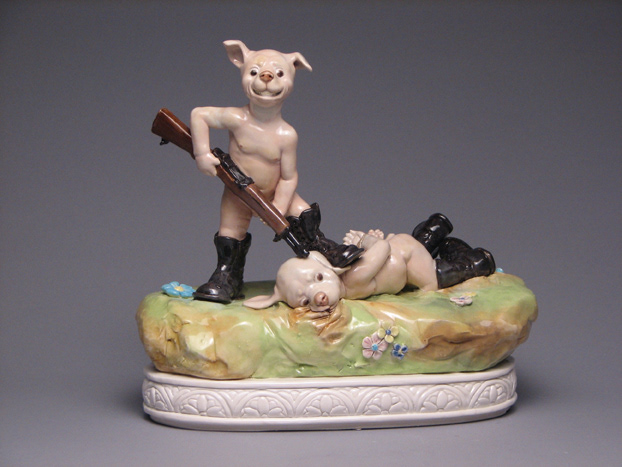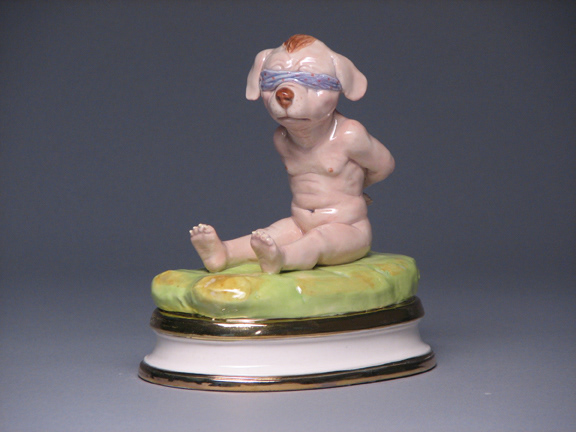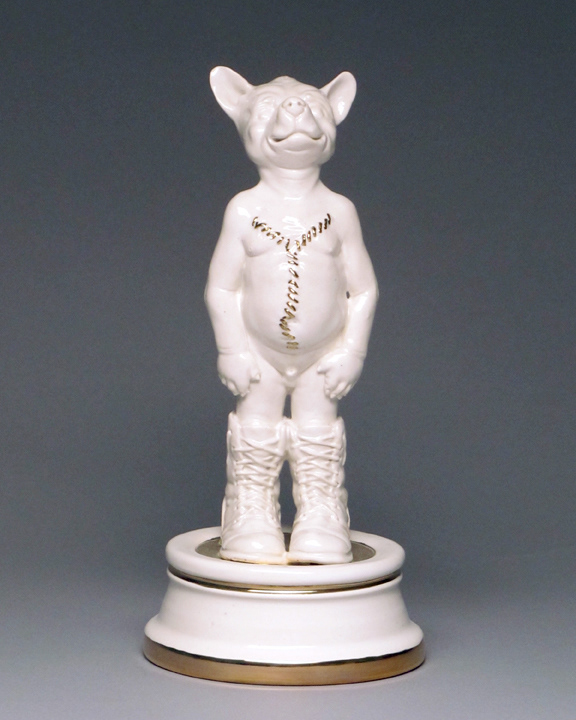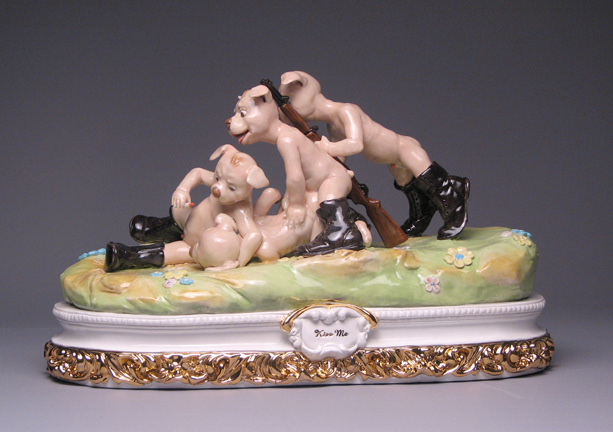From its very first inception the figurine has been an object of fashionable decoration representing the jubilant self-image of the patron. At first, expansive figurine sets were used as lavish decoration for the gala banquettes of the elite. With time, as production of porcelain became common in Europe and with the invention of new mass-production techniques, figurines became widely available to the middle class, and were important domestic decorative objects as well as collectibles. Today, new technological developments, cheap labor, and new materials make it possible for all economic groups to afford a version of their favorite figurine. Regardless of time, place or socioeconomic standing the primary objective of the figurine is the same – present a sentimental, sanitized view of the world, free of everything that is objectionable or unpleasant. As such the figurine often finds its inspiration in the fashions of the day, representing the dominant culture’s norms and ideals, which are often far from its realities.
The work featured here comes from a series titled The Toy Soldier Collection. This body of work examines the complicated social construct of the “socialization of war”. A practice through which we mask, transform, and package brutality as gallantry, and that, which is senseless, becomes something essential. A process that grants old soldiers absolution and allows new generations to perpetuate the cycle.
The puppy/boy character speaks of the youth, predisposition to training, and the potential for violence of the boy-soldier. The puppy is an appropriate symbol for the youthful soldier. Like a good soldier, a good dog is readily trainable, disciplined, and follows orders without hesitation. Like a child, a dog constantly seeks reassurance and approval, eagerly awaiting a chance to prove himself. The character of the puppy, with its soft, warm belly, sharp claws, big round eyes, and very capable teeth is simultaneously the embodiment of innocence and the potential for violence.

This is my Rifle: Allegorical Figure, 2006, cone 6 porcelain, glaze, underglaze, luster

Caution, Live Ammo: Allegorical Figure, 2006, cone 6 porcelain, glaze, underglaze, luster

Homeward Bound, 2006 , white earthenware, glaze, underglaze, china paint, luster

A Good Catch, 2006, cone 6 porcelain, glaze, underglaze, china paint, luster

A Good Catch, detail

The Swing, 2005, cone 6 porcelain, glaze, underglaze, china paint, luster

Mother's Darling, 2005, white earthenware, glaze, underglaze, china paint, luster

For Father, 2005, cone 6 porcelain, glaze, underglaze, china paint, luster

Toy Soldier Souvenirs, 2006, plastic

A Good Catch, 2007, cone 6 porcelain, glaze, underglaze, china paint, luster

A Good Catch, detail

Culprits, 2008, cone 6 porcelain, glaze, underglaze, china paint, luster

Boots: Allegorical Figure, 2008, cone 6 porcelain, glaze, luster

The Photographer, 2008, cone 6 porcelain, glaze, underglaze, luster

Volunteer III, 2009, cone 6 porcelain, glaze, underglaze, luster

Good Hunting, 2008, cone 6 porcelain, glaze, underglaze, luster

Posterity: Allegorical Figure, 2011, cone 6 porcelain, glaze, luster

Little Helpers, 2010, cone 6 porcelain, glaze, underglaze, luster

Volunteer IV, 2009, cone 6 porcelain, glaze, underglaze, luster

Volunteer VI, 2009, cone 6 porcelain, glaze, underglaze, luster

Progress Review: Allegorical Figure, 2011, cone 6 porcelain, glaze, luster

Homeward Bound, 2011, cone 6 porcelain, glaze, luster

KIss Me, 2008, cone 6 porcelain, glaze, underglaze, luster
